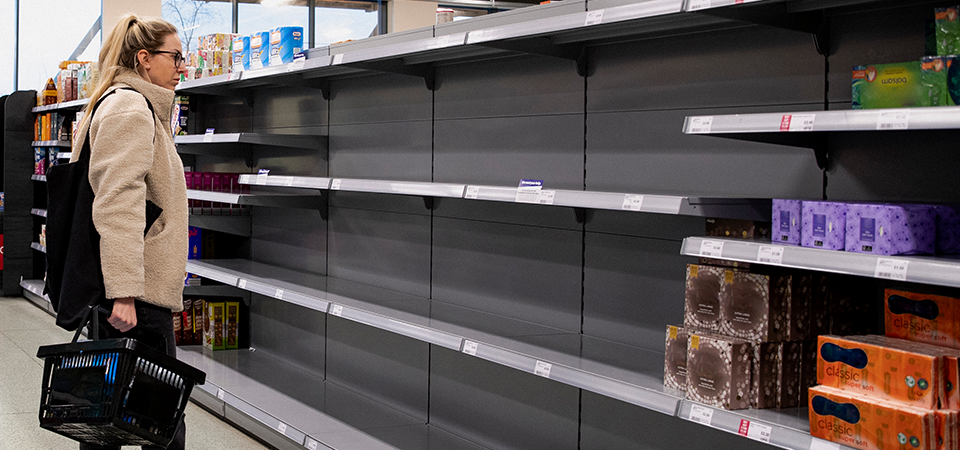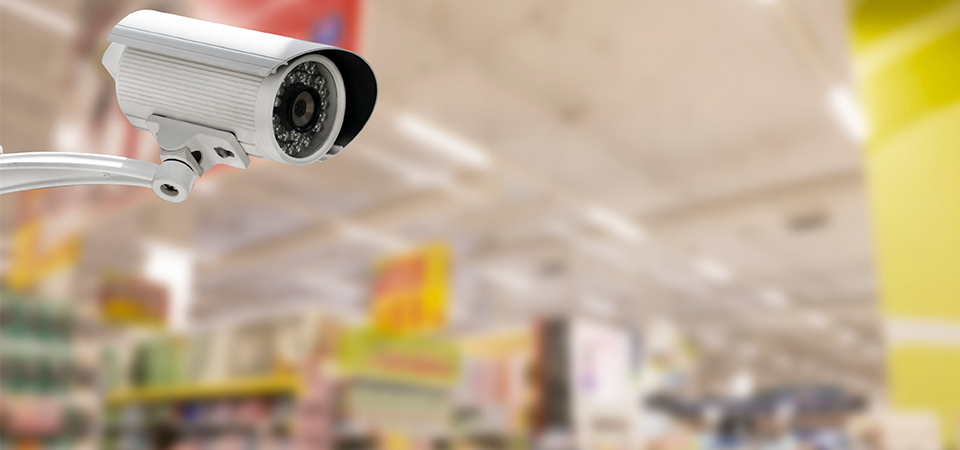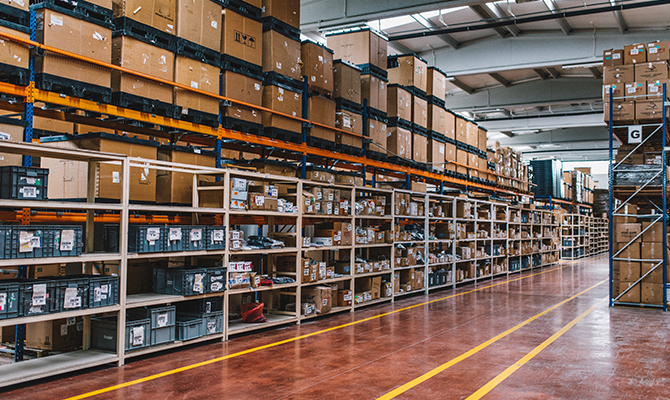What is store DX (digital transformation)?
Store DX (digital transformation) refers to the use of digital technology to innovate store business processes. This is expected to improve customer experience and improve operational efficiency. This includes, for example, introducing self-checkout and online ordering systems.
Store DX is becoming increasingly important in the retail industry. This is an initiative to reform store operations by making full use of digital technology, and streamlining inventory management is part of this effort. In today's highly competitive market, providing efficient and customer-focused service is essential. In this article, we will delve into the basics of store DX and inventory management, as well as specific implementation examples.
We would like to introduce you to some examples of our use of electronics technology, which is the Company specialty, so please take a look.
Is there a way to streamline the inventory work without relying on people or experience?
For example, what products are sold in large stores such as supermarkets and home centers? Is there a stockout? It's difficult to always keep track of things like this with only a limited number of staff members. Some stores are equipped with intercoms to share and collaborate with each other, but even then, it is not possible to understand 100% of the information.
However, what if we could "utilize electronics technology" here? Up until now, everything had been decided by people, so it seems that there was a large difference due to experience, but if electronics technology is used, even newcomers can operate efficiently.
Image recognition technology and sensing technology in recent years have evolved to a level that cannot be overlooked.

The problem of "stocking out products" in supermarkets
Special offers that attract customers at the supermarket. What happens when you come to a store looking for a bargain sale item, only to find that the sale shelves are empty?
Even if it is not a special sale item, there may be a product that suddenly becomes popular due to a celebrity introducing it on a TV show or social media. In such cases, you definitely want to avoid losing sales opportunities due to not being able to stock items even though you have stock in the warehouse. Not only sales, but also disappointing customer expectations, which is a disappointing result for both parties.
So why do out-of-stock items occur?
1. Unable to grasp sales (selling speed)
As with anything, if you don't try, you won't know the results. A product you thought would sell might not sell as well, and vice versa. It seems to depend on the time of day and the weather.
I don't understand these predictions without experience. A team made up of only veteran employees can take actions based on predictions, but in cases where only inexperienced part-time staff have to turn the work around, predictions cannot be made and there is a situation where products are out of stock. I wake up.
2. Worker dissatisfaction
When I asked someone who had experience selling items, they said that it was not a very enjoyable task. At first, it takes a long time because they can't remember where the product shelves are, and they seem to be dissatisfied that once they learn a job, they get bored with simple work. In addition, it seems that there are many complaints unique to humans, such as getting a backache when lifting a heavy box of potatoes, cutting a hand with a cardboard box, and being cold in the air conditioner. (I will explain how to solve this dissatisfaction on another occasion.)
Maximize product availability and sales opportunities!
What can we do to resolve these issues and dissatisfaction?
This is where AI and electronics technology will most likely be utilized. As I mentioned at the beginning, recent image recognition and sensing technologies have become extremely advanced and can be introduced at low cost. Solutions that were once avoided due to lack of cost-effectiveness are now available at low cost and with an increasing number of products and services that can quickly lead to results.

Therefore, why not install a "sensor" to monitor the display status of products or try "automatic recognition with a camera"?
Alerts (notifications) of monitoring results such as "How many products are on the shelf?" or "Are customers putting products back in the wrong place?" from smartphones, computers, in-store announcements, warning lights, etc. By displaying the information, you can know the appropriate timing to release the product.
There is no need to constantly patrol the store. All we need to do is create a system that allows us to respond only to what is needed, when it is needed.
At Macnica, we can help you create a system to solve these issues from scratch, or we can only provide product development support. We will respond flexibly to customer issues and requests.
What "manufacturing consulting" can support
1. Proposal of various sensors
A sensor is a device or apparatus that converts physical or chemical phenomena into electrical signals or data and outputs them. To put it simply, they play a role in handling the five human senses, such as sight and hearing, in the same way in electronic devices. However, while humans are able to make complex judgments by combining sight and hearing, electronic devices cannot make such judgments, so we must select the most suitable sensor for the purpose of use.
In the case of stocking this time, we will install appropriate sensors on the product shelves in order to know in real time the information "how many products have decreased".
After that, we can replace the human eye only by telling the employees the information "how many products have been reduced" obtained by the sensor. Next, let's consider how to convey it.
Transmission method of information acquired by the sensor
At the end of the the Company, we have an example of an AI smart shelf that actually uses a weight sensor, so please take a look.
2. Examination and construction of alert method
"How many items have I lost?" In order to receive the information from the sensor and actually display the item, how many decreased It is necessary to send an alert (notification) "" to employees. To do this, first prepare a sensor terminal to be attached to each product shelf, a router and a PC to which the information will be sent.
Communication from the sensor terminal to the router is performed wirelessly. There are many types of wireless, and Bluetooth and Wi-Fi are commonly used, so it is easy to imagine. must be considered.
So, let's take the 920MHz band as a candidate. The 2.4GHz band (wireless LAN, Bluetooth, etc.), which is often used as a wireless band, is sometimes said by facility managers, ``I don't want you to increase the 2.4GHz band any more because it causes crosstalk.'' The 2.4GHz band is inferior to the 920MHz band in terms of radio wave reachability, so the 920MHz band is recommended for applications where lower throughput (*) is acceptable.
When the router receives the sensor information, set it to display the low inventory status of each shelf on the PC screen. Example) "Product shelf 2 (decrease in 〇 pieces)"
Based on that information, how about doing the following, for example?
[Example of alert notification]
・Turn on the product shelf lamp
・Send an internal announcement that only employees can understand
・Let employees hold smartphones and send notifications
Identifies "How many products on which shelf have decreased?"
Which "sensor" and which "wireless method" are best to use? We will make proposals according to the purpose and situation that the customer wants to achieve.
[*Note]
Throughput is the processing power per unit time. You don't have to keep sending out-of-stock alert signals every tenth of a second.
Low-power radio below 1 GHz is commonly called Sub-GHz.
<Features of 920MHz band>
・Communication distance is theoretical value 25km, practical value 100~200m (about 10 times of 2.4GHz band)
・Transmission speed is 100kbps (more than 10 times faster than 400MHz band)
・Less influence of interference (WLAN / Bluetooth / microwave oven, etc.)
3. How to use data
It is also easy to store the data acquired by the sensor in the cloud.In the future, it is also possible to use the acquired data for sales promotion, and to process such data in the cloud and provide notifications (advice).You can visualize information that was vague until now, such as products that sell when the temperature is high, and products that sell on rainy days.
4.Others
If you have any problems or requests other than the above, please feel free to contact us. We will respond flexibly.
Latest trends in store DX and inventory management
| Omnichannel inventory management | Inventory management across multiple sales channels (physical stores, online marketplaces, social media platforms, etc.). It focuses on tracking inventory levels in real-time and efficiently moving inventory based on demand. |
| cloud-based management | Cloud technology is on the rise for inventory management. This allows businesses to access inventory data from anywhere, allowing them to track inventory, calculate costs, and manage supplier relationships in real time. |
| Forecast inventory | Use advanced analytics and machine learning algorithms to predict demand and optimize inventory levels. This reduces the risk of stockouts and overstocks, and also reduces the overall cost of inventory management. |
| Automation systems and robotics | The use of automated systems (such as self-guided vehicles and mobile robots) is becoming common in inventory management. These technologies improve the efficiency and productivity of logistics and supply chain management. |
| Real-time inventory visibility | Integrate advanced technologies such asRFIDandIoT to monitor inventory levels in real-time and quickly respond to changing customer demands. |
| Predictive analysis using data analysis | Use big data analytics to predict customer behavior and optimize order fulfillment. This makes data-driven decision-making important in inventory management. |
Summary
Digital inventory management is a way to accurately track the amount of products in stock and prevent overstocks and out-of-stock items. Digital inventory management systems centralize data and enable faster and more accurate inventory reconciliation.
The content introduced this time can be used not only in supermarkets, convenience stores, and home centers, but also in a variety of inventory management situations such as bookstores, pharmacies, hospitals, and warehouses. It can also be used in restaurants to check the remaining amount of tableware and to manage the remaining amount of beer servers.






We were unable to introduce a solution to dissatisfaction of workers at this time, but robots that automate product delivery will be active in the future. Demand forecasting (ordering), pricing, staffing, etc. should also determine the optimal solution.
In addition, there is no doubt that the introduction of AI will contribute to increasing sales, but the important thing is to know the answers to the questions "Why are you not selling?" and "Why are you selling so much?" If we don't find out the cause, it's only natural that we'll run out of stock and lose opportunities.
First of all, why don't you start by quantifying and understanding the parts that rely on experience and intuition?
Introducing a case study at Macnica
As an example, Mpression, Macnica 's original technology brand, has developed a prototype of an "AI smart shelf" that uses weight sensors (load cells) to check inventory and remaining quantities. We have released a video, so please take a look.
Automatic management of inventory and remaining amount using weight sensor + IoT [for retail stores and restaurants]
Inquiry
If you would like to introduce a service like the one introduced in this article, or if you would like to consider it first, please feel free to contact us below.
Manufacturing consulting service
Please refer to the button below for details of our manufacturing consulting service.
